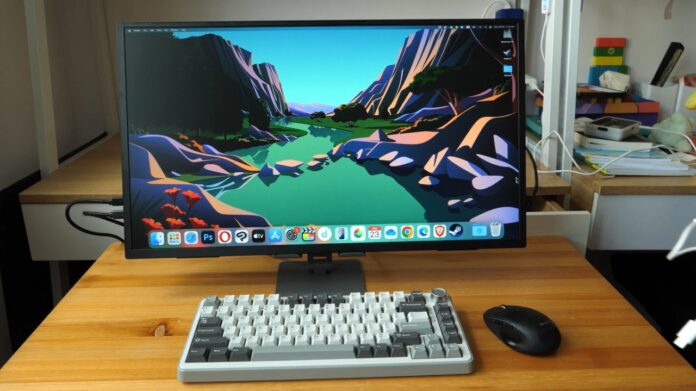Portable monitors have become indispensable tools for remote workers, gamers, digital artists, and travelers in our rapidly changing technological landscape. Lightweight bodies and plug-and-play functionality combine with slim designs to make screen expansion effortless. But as these devices become more popular, one question often arises: Do portable monitors charge like laptops? The answer varies because it depends on multiple factors such as design features, the power source used and connectivity options available.
This article examines power reception methods for portable monitors and compares their energy storage capabilities to laptops while considering user integration into multi-device ecosystems.
Understanding Portable Monitor Power Basics
We need to examine the power mechanisms of each device to determine if portable monitors charge like laptops.
How Laptops Charge
Built-in rechargeable batteries power laptops which need an external power adapter to recharge. Standard adapters for laptops link to AC power outlets and transform electrical energy into the correct voltage necessary for laptop operation. When fully charged laptops can operate without external power for multiple hours depending on battery health and usage intensity.
How Portable Monitors Receive Power
Most portable monitors fail to include a built-in battery unlike laptops. These devices obtain their power from an external source through either a USB-C or HDMI cable. Here’s how:
USB-C Power Delivery (PD): The most popular technique employs a single cable to deliver both power and video signal.
HDMI (with separate USB power): A separate USB-A to USB-C cable is needed to deliver power when monitors connect through HDMI.
Battery-Powered Monitors (less common): Internal batteries in some high-end portable monitors enable limited wireless functionality.
Most portable monitors operate differently from laptops because they cannot store power and require continuous power supply during operation.
USB-C and Power Delivery: The Game Changer
The integration of USB-C with Power Delivery technology completely transformed portable monitor operations. USB-C PD technology delivers a major benefit by enabling one cable to transmit power together with data and video signals between devices.
Your laptop can power a portable monitor if it has USB-C PD output capabilities.
- Power the monitor
- Send the display signal
- Possibly allow touch interaction (for compatible models)
Both the source device such as a laptop and the display device like a portable monitor need to support USB-C PD for this connection to work. Devices lacking PD support need individual connections to supply power and video signals.
Do Any Portable Monitors Have Batteries?
Some high-end portable monitors feature built-in batteries which provide temporary usage without the need for external power connections. The design integrates laptop charging patterns with portable monitor functionality.
Battery-powered portable monitors offer:
- Mobility: Great for on-the-go professionals.
- Versatility: These monitors function by using their own power source without tapping into the host device’s energy.
- Convenience: Useful when power outlets are unavailable.
The battery compartment leads to more expensive and bulkier models.
Comparing Portable Monitors vs. Laptops: Charging Differences
| Feature | Laptops | Portable Monitors |
| Internal Battery | Yes | Rare (only select models) |
| Can Charge When Off | Yes | No (unless battery-powered model) |
| Power Source | AC adapter | USB-C/USB-A or via host device |
| Can Operate on Battery | Yes | Rare (only some battery models) |
| Power & Video on One Cable | Sometimes | Yes, with USB-C PD support |
The fundamental design of laptops enables them to operate independently while portable monitors focus on display extension but typically need power from additional devices.
How to Power a Portable Monitor
These represent the various methods available to power your portable monitor.
- Via USB-C Cable
A USB-C to USB-C cable enables many modern portable monitors to receive power from laptops or smartphones as long as both devices support Power Delivery (PD).
Pros:
- Simplifies cable management
- Supports power and video in one
Cons:
- Drains laptop battery
- May not work with older laptops
- USB powered monitors
Some portable monitors can receive power through a USB-A to USB-C cable connected to either a power bank or wall adapter. Certain monitors utilize USB-A to USB-C cables connected to power banks or wall adapters for power supply.
Pros:
- Doesn’t drain host device
- Easy to find compatible accessories
Cons:
- The setup requires both an HDMI cable for video transmission and a USB cable for power connection.
- Slower power delivery
- Internal Battery
Select models come with rechargeable batteries.
Pros:
- Fully wireless operation
- Convenient for presentations or travel
Cons:
- Higher cost
- Heavier
Is it possible to power a laptop using power from a portable monitor?
Many people mistakenly believe that laptops powering portable monitors implies that portable monitors can charge laptops. However, portable monitors cannot charge laptops. Portable monitors function primarily as power sinks which means they receive power instead of providing it.
Monitors with internal batteries have standalone functionality and do not serve as power sources for external devices.
Energy Efficiency: Does a Portable Monitor Drain Laptop Battery?
Laptop battery power will be depleted when you use USB-C to power a portable monitor. The impact varies depending on:
- Monitor size and brightness
- Resolution (4K vs. 1080p)
- Monitor model efficiency
The energy consumption of a 4K portable monitor typically exceeds that of a 1080p screen when brightness settings are increased. When using a portable monitor for lengthy periods it’s advisable to plug the laptop into its charger.
Smart Tips for Using Portable Monitors
- Check Power Requirements: Your laptop should provide sufficient power if you intend to use USB-C connections.
- Invest in Dual-Port USB-C Hubs: Dual-port USB-C hubs allow for power and video routing while preventing a single port from becoming overloaded.
- Use a Wall Adapter or Power Bank for Long Sessions: This helps preserve your laptop’s battery.
- Look for Battery Models if You Need Wireless Flexibility: Battery-powered portable monitors provide travel convenience but come with increased costs.
Choosing the Right Portable Monitor
Choosing a portable monitor requires careful consideration of available power options. 4K portable monitors deliver excellent visual detail suited for creative and professional applications and feature several input modes including USB-C and HDMI. ).
UPERFECT’s portable monitor collection provides models designed to expand laptop setups for dual-screen work while accommodating needs from gaming to business tasks to daily internet use.
Final Thoughts
So, do portable monitors charge like laptops?
Not exactly. The majority of portable monitors lack internal batteries which prevents them from charging in the conventional manner. These monitors depend on continuous power that they receive from the host device through USB-C or an external power adapter.
Recent developments in USB-C PD technology along with models that include built-in batteries have greatly increased the mobility and adaptability of portable monitors. A portable monitor’s power requirements are fundamental knowledge for anyone who wants to extend their work setup mobility or use it for gaming on an additional screen.
UPERFECT provides numerous superior options that span from laptop monitor to 4K portable monitor which deliver excellent clarity and performance while maintaining portability for demanding users.


